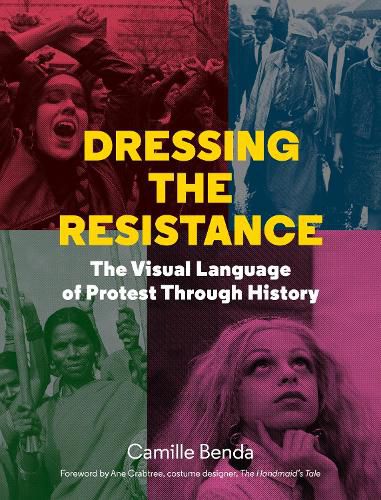Readings Newsletter
Become a Readings Member to make your shopping experience even easier.
Sign in or sign up for free!
You’re not far away from qualifying for FREE standard shipping within Australia
You’ve qualified for FREE standard shipping within Australia
The cart is loading…






Dressing the Resistance explores how everyday people have harnessed the visual power of clothing, accessories and costume to spur social and cultural change.
Throughout history, societies have used clothing to show acceptance and exclusion, convention and subversion, group belonging and rejection. In the same way, fashion, clothing, textiles and costume have served their own critical role in shaping protest movements throughout history. In short, clothing was often the most basic opportunity for groups to rebel: a simple, mundane item to express their discontent. American suffragettes made and wore dresses from old newspapers printed with voting slogans. British Punks took a humble safety pin from the household sewing kit, punched it through an earlobe and headed out to face a bleak post-war world. And male farmers in India wore their wives’ saris while staging sit-ins on railroad tracks. With the advent of the Trump administration and the ensuing worldwide Women’s March in January 2017, the #MeToo movement and #BlackLivesMatter, protest has again entered the American zeitgeist, this time with a stronger need for inspiration and action than ever before.
$9.00 standard shipping within Australia
FREE standard shipping within Australia for orders over $100.00
Express & International shipping calculated at checkout
Dressing the Resistance explores how everyday people have harnessed the visual power of clothing, accessories and costume to spur social and cultural change.
Throughout history, societies have used clothing to show acceptance and exclusion, convention and subversion, group belonging and rejection. In the same way, fashion, clothing, textiles and costume have served their own critical role in shaping protest movements throughout history. In short, clothing was often the most basic opportunity for groups to rebel: a simple, mundane item to express their discontent. American suffragettes made and wore dresses from old newspapers printed with voting slogans. British Punks took a humble safety pin from the household sewing kit, punched it through an earlobe and headed out to face a bleak post-war world. And male farmers in India wore their wives’ saris while staging sit-ins on railroad tracks. With the advent of the Trump administration and the ensuing worldwide Women’s March in January 2017, the #MeToo movement and #BlackLivesMatter, protest has again entered the American zeitgeist, this time with a stronger need for inspiration and action than ever before.